Reporter's Notebook: Retracing Kentucky's longest tornado
ABC News' Brad Mielke retraced the path of Kentucky's deadly tornado.
Tornadoes have a weird way of playing with luck.
By nature, they're violent and unpredictable. They're also hauntingly specific. They can reduce one person's home to rubble while the house next door is untouched.
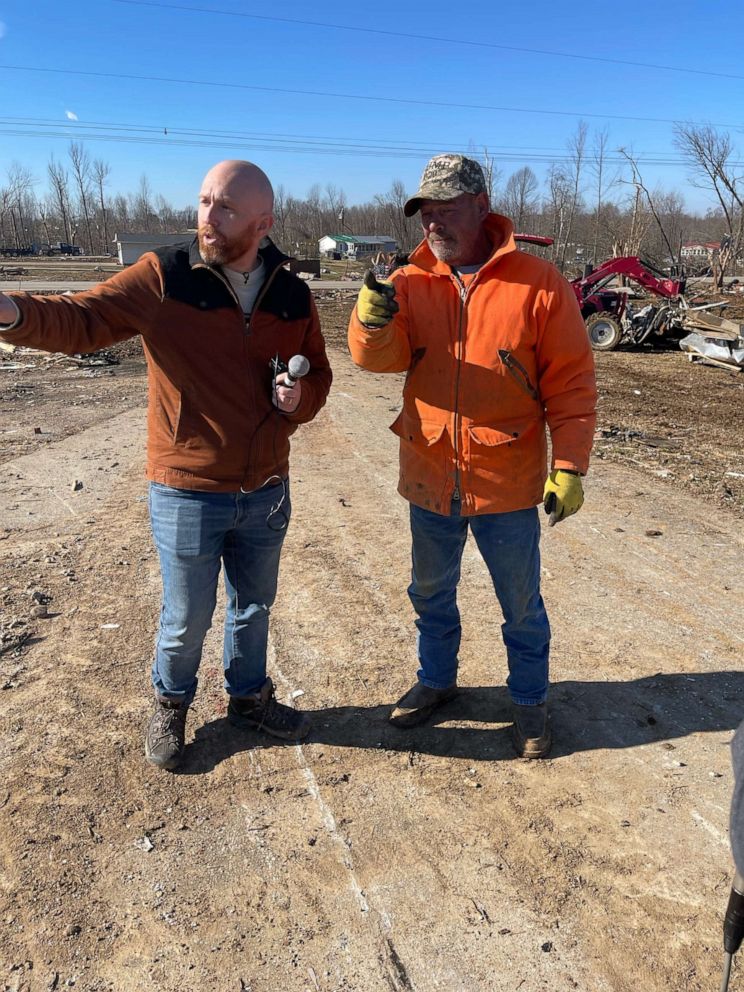
Most of them disappear before they can harm anything besides some trees. So when a tornado forms, you hope it dissipates before it hits a population center. You hope to get lucky.
But when you draw a line long enough, eventually your luck runs out.
Two weeks ago, among a flurry of devastating storms, one tornado in Kentucky did something a tornado hasn't done in nearly a century. It set off in a straight line -- and didn't let up for 165 miles. It killed 76 people in that state alone.
This week, I retraced its path, mile by mile.
'A wall of black, a mile wide'
After beginning its journey in a Tennessee cornfield, the twister entered Kentucky and found its first town: the 100-resident town of Cayce, Kentucky.
Wade Adams, Cayce's volunteer fire chief, has told me to meet him at the fire station. I've found the address -- but not the station. All that's there is a concrete slab, and a pile of rubble.
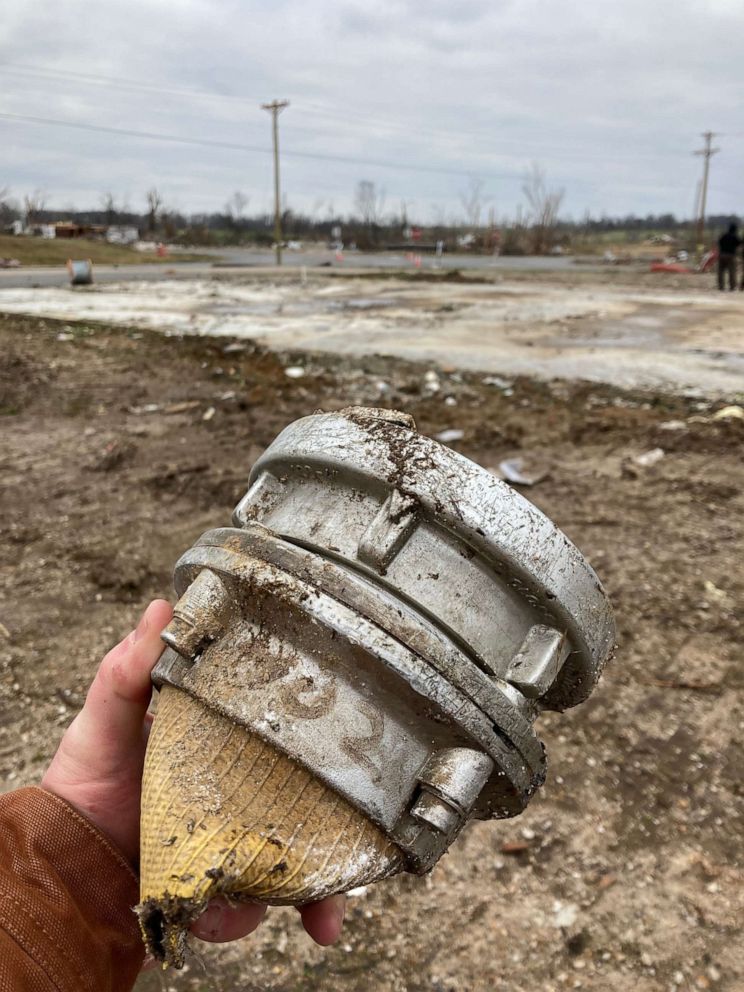
He tells me when he saw the storm approaching, it looked less like a funnel than "a wall of black, a mile wide." Moments after it passed, he came back outside.
"I walk over the top of this hill here, and we don't have a station," he says. "I've lived here my entire life; I've got family in the area. Nothing can prepare you for walking into your neighborhood, and hearing your community members screaming in the streets."
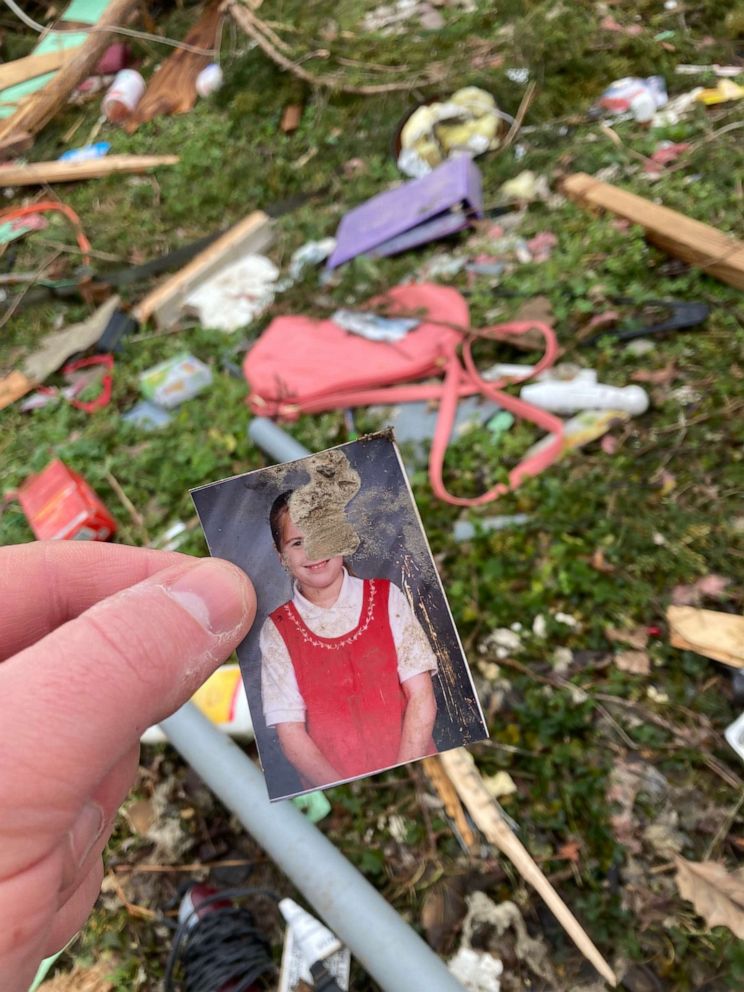
Cayce is also the first town where you realize the true danger that can come after the storm. Inside a badly damaged home is Renee Nolan, who can't afford a hotel room while her roof is replaced. Instead, she'll take her chances under a blue tarp, with a propane heater.
Later tonight, the temperature will reach 25 degrees.
Homes stand without walls
Throughout the next two days, I travel the route up through Mayfield, perhaps the biggest town on the storm's path. As you drive up West Broadway, the sense of dread can sneak up on you: you notice one house with damage, then another with more damage. The next house is missing a wall.
Quickly, on either side of you, in what should be a local shopping district, there isn't a single building standing. Piles of bricks stand 10, 20 feet high. It resembles a bombed-out village in Syria more than western Kentucky.
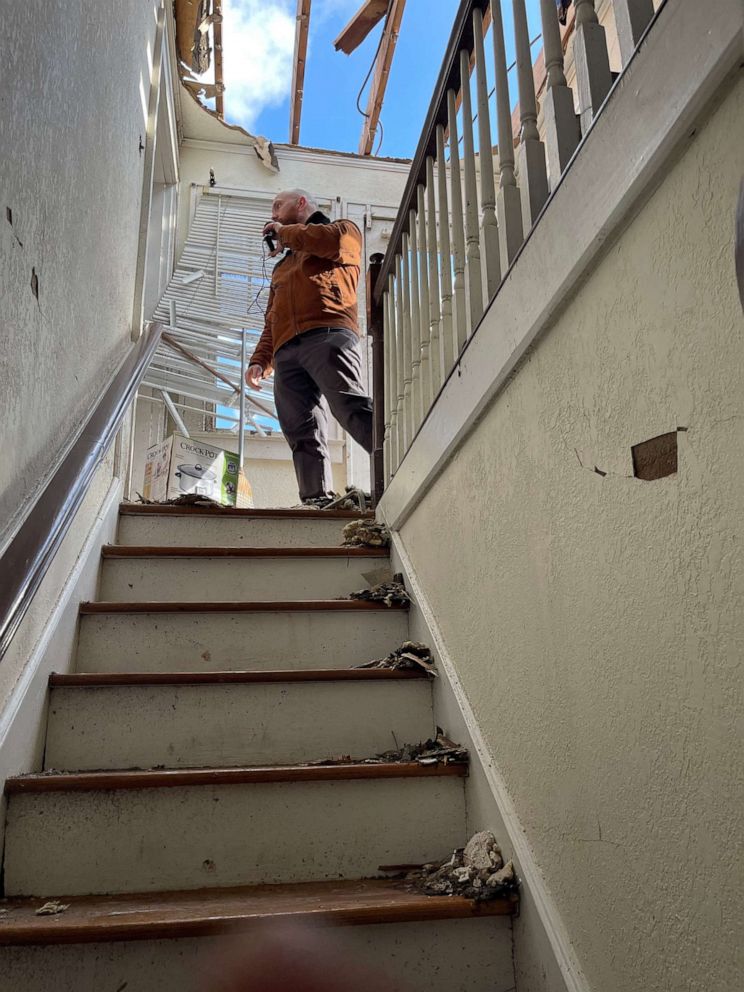
A woman named Vicki gave me a tour of her house, which left me standing on what now looks like an open-air deck. The only thing that gives it away as a bedroom is the bed, the nightstand and her dry cleaning flapping in the wind.
And this becomes a common theme on my trip: rooms that aren't missing much except for their walls, like an oversized dollhouse. You feel almost embarrassed to peek inside, because fireplaces and family photographs are sitting there untouched.
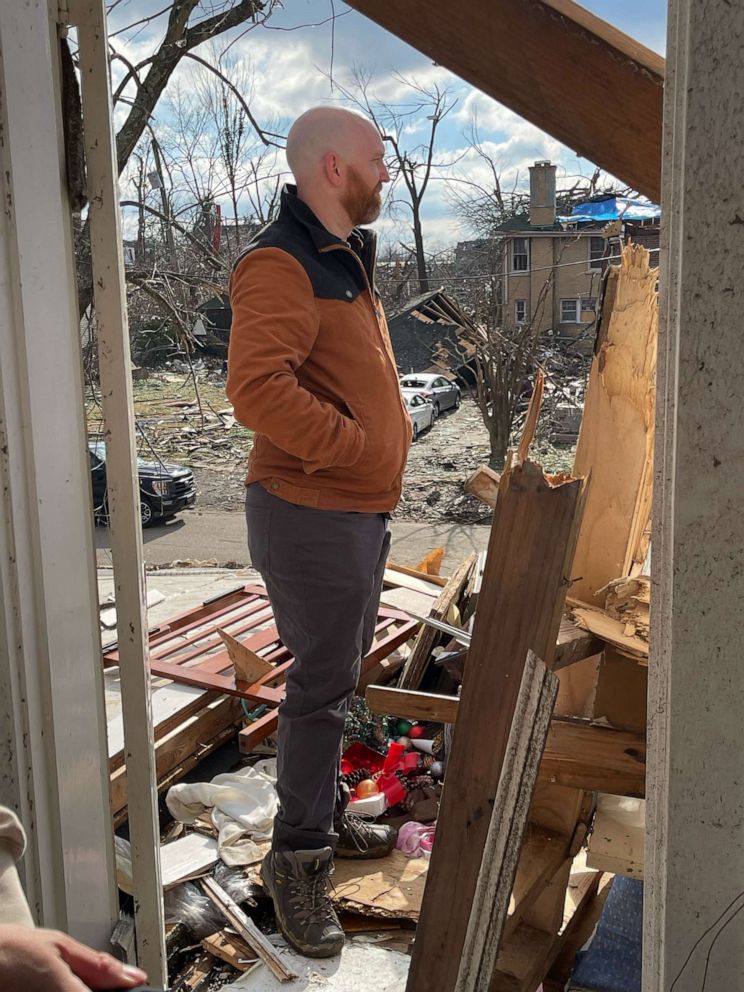
In Gilbertsville, I'm having trouble following Rick Smock as he describes his garage.
"Oh wait, this is your garage!" I exclaim. Sure enough, there was a wall with a garage door opener -- it was just that the rest of the structure was sitting 15 feet away. His car was next door in the neighbor's yard. It had rolled uphill.
Picking up the pieces
I continue on through Dawson Springs, where men with bulldozers are helping their neighbors raze what's left of their property. In Bremen, I learn of a family whose home was destroyed by a tornado 30 years ago; they built a new home that included a reinforced storm shelter. That concrete block is now the only thing standing.
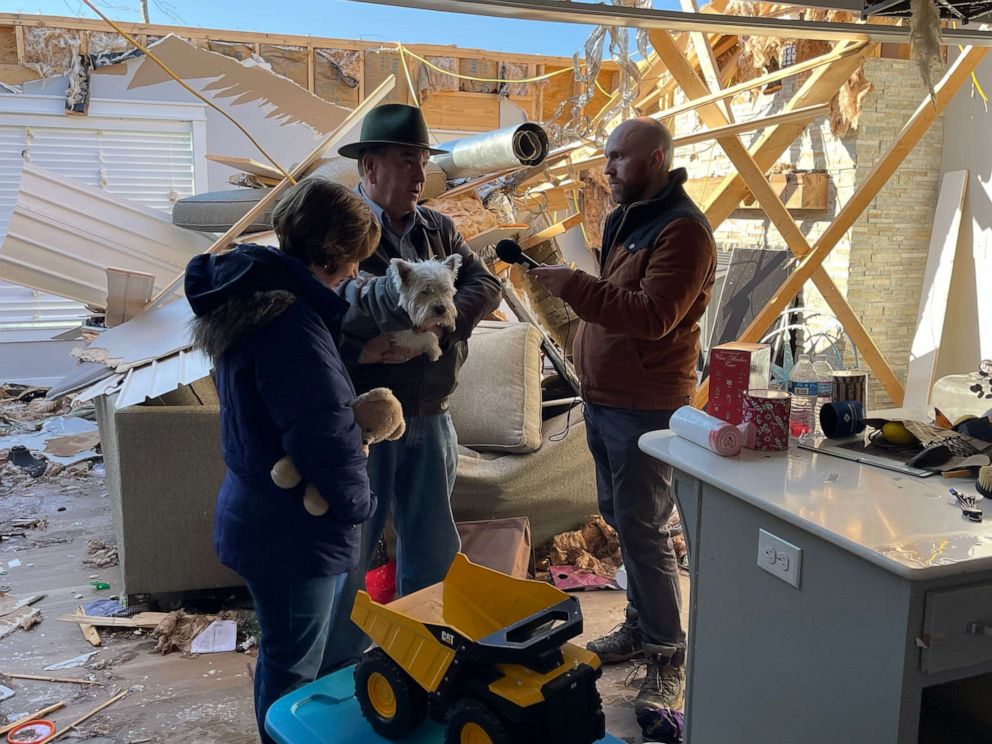
A neighbor describes finding the family dog dead, nearby the property, two days after the tornado. "I made a pine box for him Sunday night," he says, his voice cracking. "I covered him in a sheet. I put some fresh straw in there for him. I put a pillow under his head and put some Milkbones in there for a snack along the way."
And yet not once, not during a single mile of this trip, did a single survivor ask me for help. Even residents with no home insurance insist they don't need handouts. They uniformly say other neighbors had it worse.
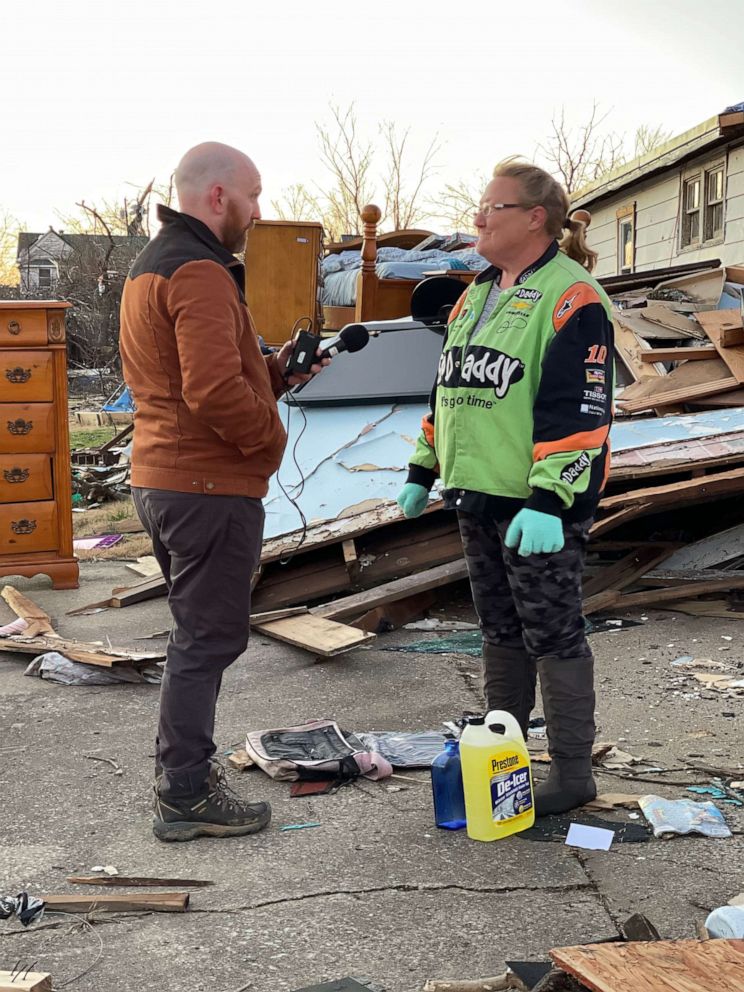
As I arrive at the Rough River in Breckenridge County, where this storm mercifully disappeared into the sky, I notice it's destroyed an entire boat yard right across the street -- another sign that this tornado didn't ease up for 165 miles. The owner tells me with all the property stored on his land, he's suffered $10 million to $15 million in damage.
I asked him if he's thought about his luck. Did he ever wonder what it would be like if the storm had just lifted off a few hundred yards earlier?
He shrugs his shoulders. "Sure I have," he says. But, he points out, that wouldn't have helped the farm behind him that was destroyed. They're focused on each other's losses as much as their own.
And, for that at least, they're lucky.
This report was featured in the Wednesday, Dec. 22, 2021, episode of “Start Here,” ABC News’ daily news podcast.
"Start Here" offers a straightforward look at the day's top stories in 20 minutes. Listen for free every weekday on Apple Podcasts, Google Podcasts, Spotify, the ABC News app or wherever you get your podcasts.






